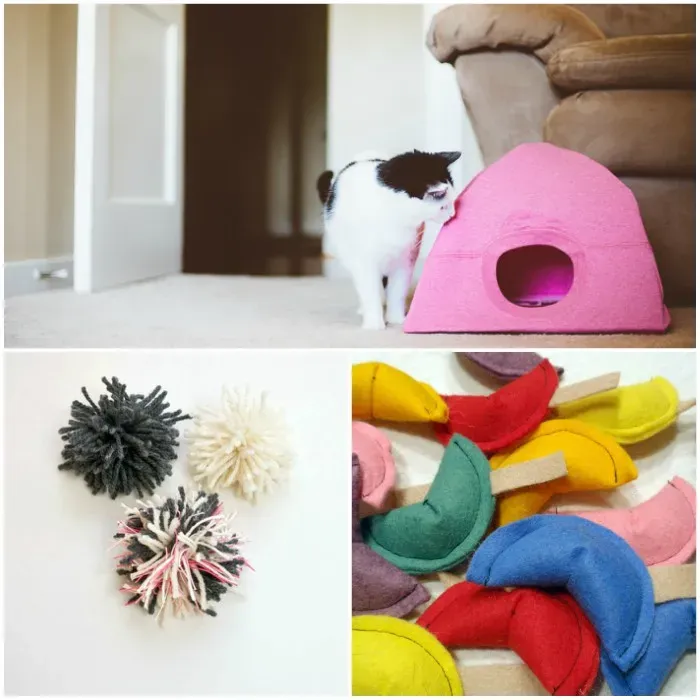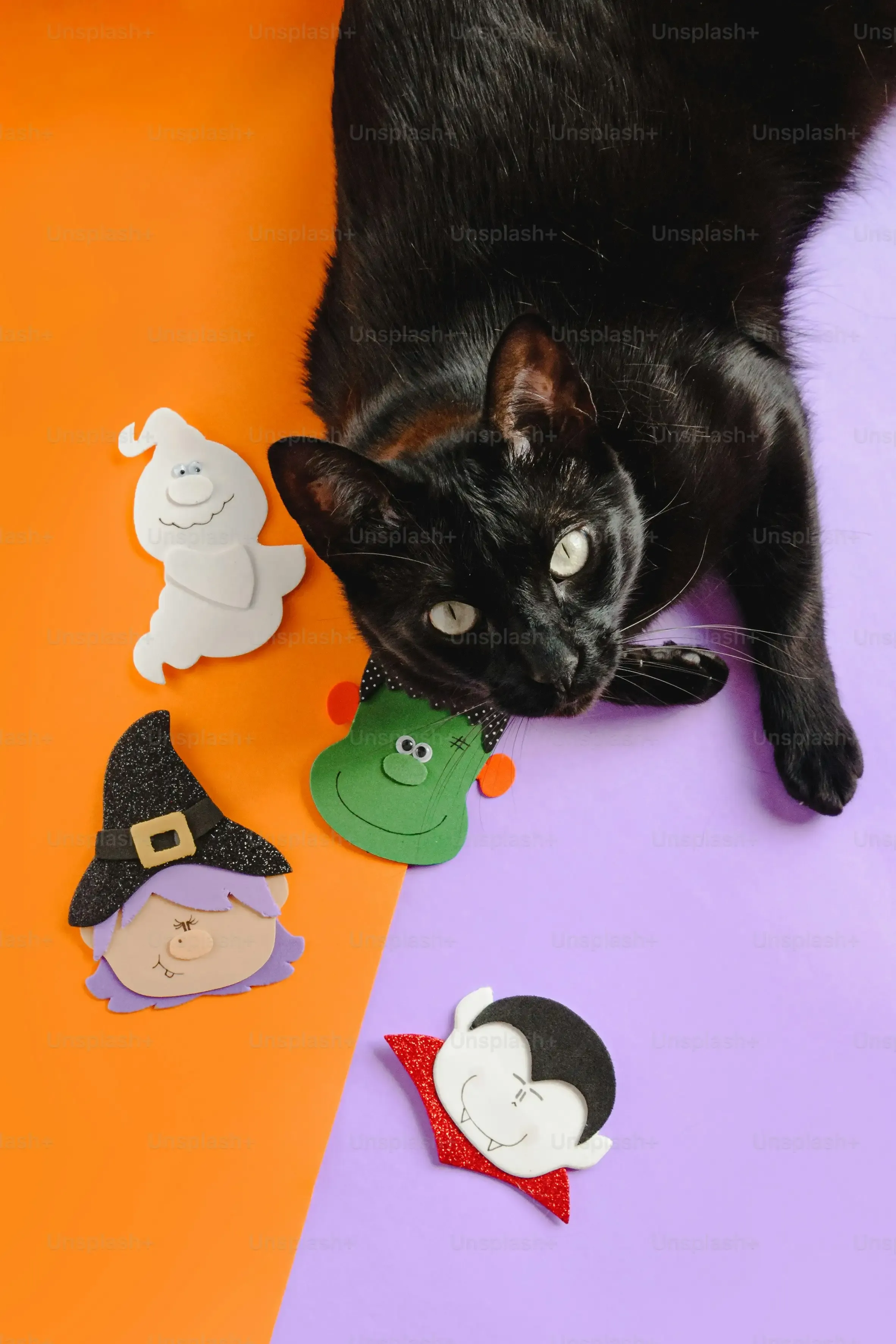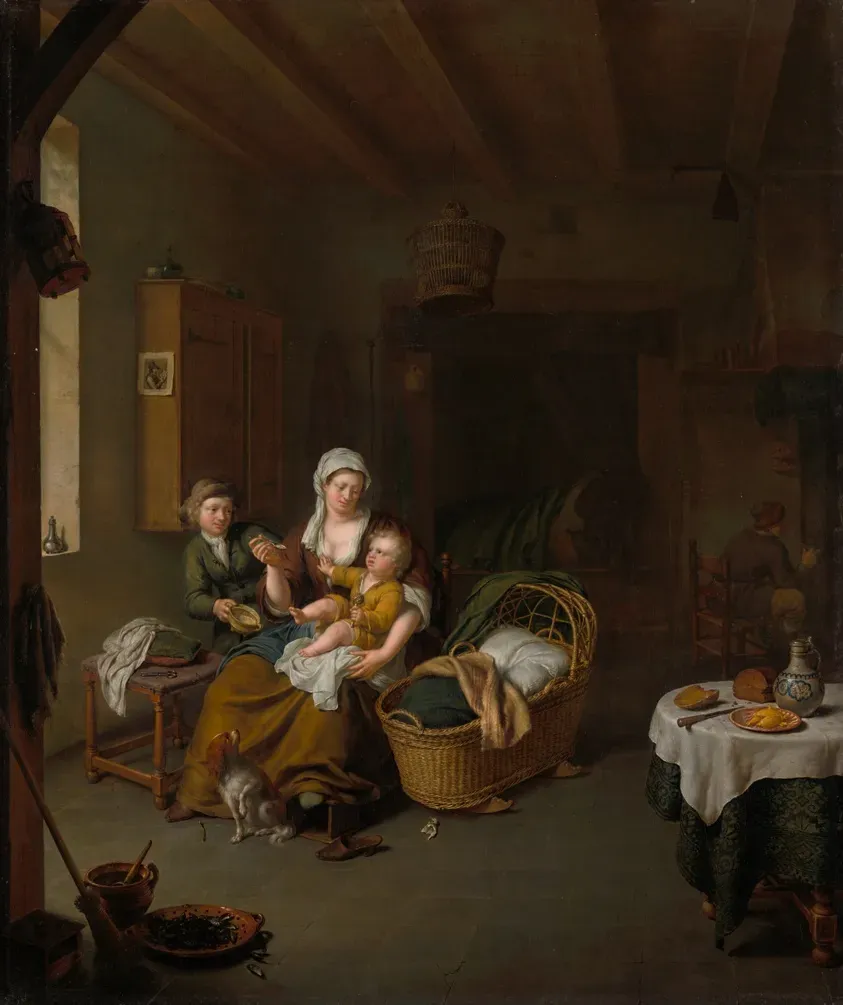Table of Contents
Ever watch your cat staring blankly out the window for hours? Or maybe they've become a bit of a couch potato, uninterested in that expensive toy you just bought? It’s not just laziness; your feline friend might be bored! Just like us, cats need mental and physical stimulation to stay happy and healthy. Without it, they can develop stress, anxiety, or even destructive behaviors. We all want our cats to thrive, not just survive, right?
Why Your Cat Needs Enrichment (and Why DIY Works)

Why Your Cat Needs Enrichment (and Why DIY Works)
Beyond the Food Bowl and Sofa
Look, your cat isn't just a furry ornament designed to nap 20 hours a day. They're natural hunters, explorers, and problem-solvers packed into a surprisingly small package. In the wild (or even just the backyard), they'd spend hours tracking prey, navigating territory, and figuring things out. Our comfy homes, while safe, often lack these natural challenges. This isn't just about keeping them busy; it's about meeting fundamental needs their instincts scream for. Without outlets for these drives, you get a bored cat, and a bored cat is often a stressed cat, or worse, a cat who decides your favorite curtains look like excellent climbing practice.
Signs Your Cat Might Be Understimulated
Think of it like a kid stuck inside on a rainy day with no toys or books. They'll find *something* to do, and it's usually not what you want them doing. Cats are the same. If your furball is suddenly destroying furniture, picking fights with other pets, overeating, or acting unusually withdrawn or clingy, lack of enrichment could be the culprit. It's not personal; it's just their brain saying, "Hey, I need a job!" Providing mental and physical challenges helps prevent these issues before they start, saving your sofa and your sanity.
- Excessive meowing or vocalization
- Destructive scratching or chewing
- Aggression towards people or other pets
- Obsessive grooming or licking
- Changes in eating habits (over- or under-eating)
- Lethargy or excessive sleeping (beyond normal cat naps)
- House soiling outside the litter box
The Power of Homemade Cat Enrichment Toys
So, why bother with DIY when the pet store is right there? For starters, it's usually way cheaper. You can repurpose items you'd otherwise toss, like cardboard tubes or old t-shirts. More importantly, homemade cat enrichment toys let you tailor the challenge specifically to your cat's personality and abilities. That fancy store-bought maze might be too easy or too hard. Building your own lets you adjust difficulty. Plus, there's a certain satisfaction in watching your cat engage with something you made just for them. It's like presenting a tiny, furry genius with a puzzle box designed by their loving (and slightly eccentric) human.
Whip Up Some Fun: Easy Homemade Cat Enrichment Toys

Whip Up Some Fun: Easy Homemade Cat Enrichment Toys
Start Simple: Cardboard and Crumpled Paper Magic
You don't need a workshop or advanced crafting skills to make great homemade cat enrichment toys. Seriously, look around your recycling bin. That empty toilet paper roll? Poke some holes in it, stuff it with treats, and fold the ends. Instant puzzle feeder. Cereal box? Cut holes in it, toss in some kibble or a crinkle ball, and seal it up. Your cat gets to "hunt" for their prize. A plain old paper bag (handles cut off for safety!) is a classic hiding spot and ambush zone. Crumple up some paper into a ball, and many cats will go nuts batting it around. The beauty is in the simplicity. These aren't pretty, but they work because they tap into that innate curiosity and desire to interact with novel objects.
Level Up: From Basic to Slightly More Involved
Ready to get slightly more ambitious? You can turn an old t-shirt into a braided tug toy or a "prey" item by stuffing it with some fabric scraps and tying knots. Got a spare sock? Put some catnip inside and tie it off. Boom, new kicker toy. For environmental enrichment, stack some sturdy cardboard boxes and cut different sized holes. Secure them together with packing tape or zip ties, and you've got a multi-level fort or tunnel system. It's like building a tiny, slightly unstable cat castle on a budget. Just make sure everything is secure and there are no sharp edges or small pieces that could be chewed off and swallowed.
Here are a few quick ideas:
- Toilet paper roll treat dispenser: Poke holes, add treats, fold ends.
- Cardboard box maze: Cut holes between boxes, connect them.
- T-shirt braided toy: Cut strips, braid, knot ends.
- Sock catnip toy: Fill sock, tie off.
- Paper bag hideout: Just open it up (cut off handles!).
Rotate and Refresh: Keep the Excitement Alive
The key to any enrichment toy, homemade or store-bought, is rotation. Cats get bored. That amazing new thing you made will eventually become just another object in the room. Don't leave all the toys out all the time. Keep a selection available and swap them out every few days or a week. When a "missing" toy reappears, it feels new and exciting again. Think of it as curating a museum of fun for your cat, constantly changing the exhibits. Also, inspect homemade toys regularly for wear and tear. If they're falling apart or becoming a safety hazard, it's time to retire them or make a new version. No need to hoard mangled cardboard boxes.
Food Puzzles You Can Build: DIY Food Enrichment Toys

Food Puzzles You Can Build: DIY Food Enrichment Toys
Why Make Your Cat Work for Dinner?
Let's talk about dinner time. For most house cats, it's a pretty passive affair: food appears in a bowl, they scarf it down, maybe throw some up later. This isn't exactly stimulating. In the wild, getting a meal is a whole production involving stalking, pouncing, and problem-solving. Food puzzles, including homemade cat enrichment toys designed around meals, tap into this predatory sequence. They force your cat to think, to manipulate objects, and to work a little bit for their food, which is way more satisfying for their brains than just gravity-feeding kibble into a bowl. It slows down fast eaters, provides mental exercise, and turns mealtime from a gulp-fest into an engaging activity.
Simple DIY Food Puzzle Ideas
You don't need a degree in engineering to build effective food puzzles. Grab an empty plastic bottle (like a water bottle). Make several holes around the sides, just big enough for a piece of kibble or a small treat to fall out when the bottle is rolled or batted. Fill it up, screw the lid on tight, and watch your cat figure out how to get the goodies. Another easy one? Muffin tins. Put a few pieces of kibble in some of the cups and cover them with ping pong balls or crumpled paper. Your cat has to use their paws to uncover the food. These homemade cat enrichment toys are ridiculously simple but surprisingly effective at engaging those hunting instincts.
Here are a few materials that work great for DIY food puzzles:
- Empty plastic bottles
- Cardboard tubes (toilet paper, paper towel)
- Muffin tins
- Small cardboard boxes
- Plastic food containers (like butter tubs)
- Egg cartons
Introducing the Puzzle and Upping the Challenge
Don't just plop a complex puzzle down and expect your cat to instantly get it. Start easy. For the bottle feeder, leave the lid off initially so food just spills out as they interact with it. Once they understand the concept, put the lid on. For the muffin tin, leave some cups uncovered at first. The goal is success, not frustration. As your cat gets the hang of it, you can increase the difficulty – make holes smaller, use more complex containers, or hide the puzzle in different locations. Turning everyday objects into homemade cat enrichment toys that dispense food is a low-effort, high-reward way to boost your cat's daily life.
Build a Better World: Environmental Enrichment with Homemade Cat Toys

Build a Better World: Environmental Enrichment with Homemade Cat Toys
Think Up, Not Just Out: Vertical Space and Hiding Spots
Cats love high places. It's their inner predator wanting to survey their territory, or maybe just escape the dog or the vacuum cleaner. You don't need to install expensive cat trees everywhere to provide this. Look at your existing furniture. Can you clear a shelf on a bookcase? Is there a sturdy surface on top of a cabinet they can access safely? For homemade options, stack those cardboard boxes we talked about earlier and secure them into towers or multi-level platforms. Cut different sized openings so they can jump through or hide inside. Drape old blankets or towels over chairs or tables to create instant, cozy hiding spots. These simple additions transform a flat, boring environment into a dynamic, three-dimensional playground that caters to their natural instincts.
Create a Landscape: Hunting Grounds and Sensory Stations
Your living room might not be the Serengeti, but you can make it feel a bit more wild. Scatter those homemade cat enrichment toys – the paper balls, the sock toys, the bottle puzzles – around the room instead of leaving them all in one basket. This encourages your cat to "hunt" for their playthings. Create sensory stations. A shallow box filled with crinkle paper or even large, smooth river stones can be fascinating for them to explore with their paws. Set up a "bird TV" by placing a bird feeder outside a window they can safely watch from. It's passive, but it's a visual feast that engages their predatory focus without harming any actual birds. Remember, their world is primarily their home, so making that space interesting is key.
What common household items are just waiting to become cat environmental enrichment?
- Cardboard boxes (all sizes!)
- Old blankets or towels
- Empty paper bags (remove handles)
- Sturdy furniture you can clear space on
- Crinkle paper or packing paper
Keeping it Safe and Fresh: Tips for Your Homemade Cat Enrichment Projects

Keeping it Safe and Fresh: Tips for Your Homemade Cat Enrichment Projects
Safety First, Always
Alright, you've crafted some awesome homemade cat enrichment toys out of cardboard tubes and old t-shirts. You're feeling pretty proud, as you should be. But before you unleash your creations on your unsuspecting furball, do a thorough safety check. This isn't optional. Cats are surprisingly good at destroying things and, unfortunately, sometimes ingesting the bits they destroy. Look for small pieces that could be chewed off and swallowed, like tape, string, or tiny cardboard tabs. Ensure there are no sharp edges, staples, or anything else that could cause cuts or scrapes. If you used any glue or paint, make sure it's non-toxic and completely dry. A little vigilance now saves you a potential trip to the emergency vet later. Trust me, they charge extra for removing ingested yarn.
Supervise and Inspect Regularly
Unlike that indestructible (or so they claim) store-bought plastic monstrosity, your homemade cat enrichment toys aren't built to last forever. Cardboard gets soggy, fabric frays, and tape peels. That's fine! The point is they're cheap and easy to replace. However, because they break down, you need to supervise playtime, especially when introducing a new toy. Watch how your cat interacts with it. Are they just batting it around, or are they trying to eat it? Regularly inspect the toys for wear and tear. A ripped seam on a fabric toy or a heavily chewed edge on a cardboard one means it's time to repair or retire it. Don't wait until it's falling apart into ingestible pieces.
What to look for during your safety check:
- Small parts that could be chewed off
- Sharp points or edges
- Loose strings, ribbons, or tape
- Non-toxic materials (glue, paint, fabric)
- Secure construction (no wobbling towers or easily detached pieces)
- Signs of heavy wear and tear (rips, excessive chewing)
Keep it Clean and Rotate Often
Your cat's toys, including your brilliant homemade cat enrichment toys, get gross. They get covered in slobber, tracked through whatever was on the floor, and sometimes even become temporary wrestling partners for their littermates. For fabric toys, a quick wash in the washing machine (inside a mesh bag is helpful) using pet-safe detergent works wonders. Cardboard items, unfortunately, aren't really washable; once they're soiled or falling apart, it's best to toss them and make a new one. As we discussed, rotation is key to keeping things interesting, but it also helps with hygiene. While some toys are out of commission, you can clean or inspect the ones that were in use. A clean toy is a more inviting toy, and let's face it, you don't want cat cooties spreading around your house.
Making Enrichment a Habit
So there you have it. Keeping your cat engaged doesn't require a second mortgage or a trip to a specialty store. Simple cardboard tubes, old t-shirts, and forgotten boxes can become powerful tools for mental and physical stimulation. We've seen how homemade cat enrichment toys tackle boredom, reduce stress, and strengthen the bond you share. It takes a little creativity and a willingness to experiment, but the payoff—a happier, healthier, and more active cat—is significant. Remember to keep safety in mind and rotate their toys to maintain interest. Your cat might not leave you a five-star review, but their purrs and playful antics will be all the thanks you need.